| | |  | | |  |
Dear Friends,
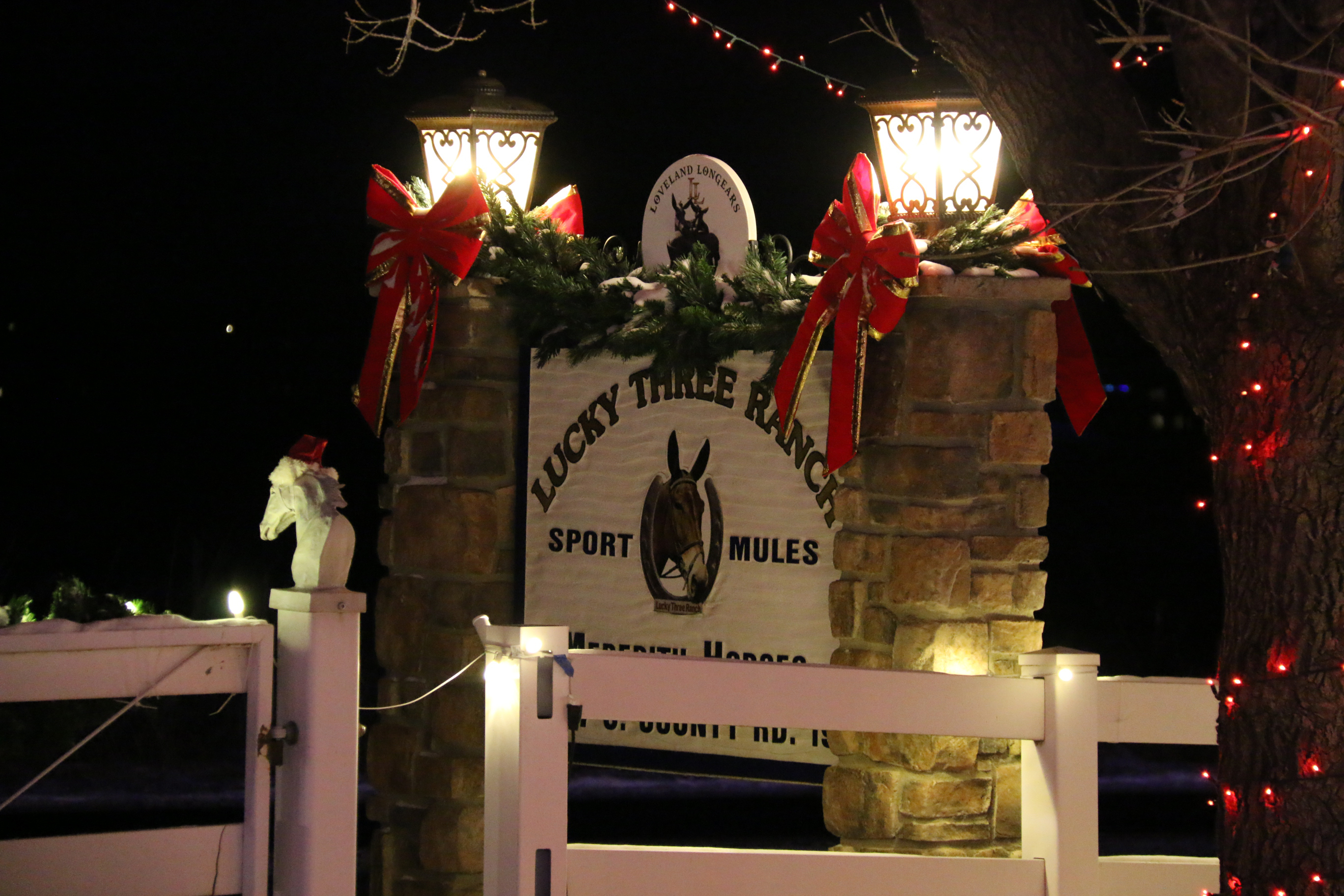 Welcome to 2024! I hope your holiday season was merry and bright, and that you are now ready to meet your New Year’s resolutions with determination and perseverance. I wish you all the very best going forward. During our Christmas Party, people enjoyed taking tours of all the lights around the ranch. The week after Christmas, we agreed to allow 14 visitors from the Women of Influence group to come out and take a private tour as well...they LOVED IT! Welcome to 2024! I hope your holiday season was merry and bright, and that you are now ready to meet your New Year’s resolutions with determination and perseverance. I wish you all the very best going forward. During our Christmas Party, people enjoyed taking tours of all the lights around the ranch. The week after Christmas, we agreed to allow 14 visitors from the Women of Influence group to come out and take a private tour as well...they LOVED IT!
 In order to keep up morale here at the Lucky Three Ranch, we like to decorate early and then not take down the decorations until after my birthday on February 5th. We love to go all out and the neighbors love to drive by and look at all the lights and numerous decorations that we have. Each year, the guys try to think of a new display to add to the magical fairytale land that we have created. They added a kicking donkey to the eaves of the hay barn...he’s really COOL! In order to keep up morale here at the Lucky Three Ranch, we like to decorate early and then not take down the decorations until after my birthday on February 5th. We love to go all out and the neighbors love to drive by and look at all the lights and numerous decorations that we have. Each year, the guys try to think of a new display to add to the magical fairytale land that we have created. They added a kicking donkey to the eaves of the hay barn...he’s really COOL!
 Last year, Chad went to the after-Christmas sales and bought three pallets of 7-9-foot, and one 12-foot, Christmas trees...28 of them in all! We have a fenced in space in the middle of the mules’ dirt pen that keeps them from tromping over the large, buried water tank there. So, that is where Chad and Steve put up their North Pole Christmas Forest, complete with 14 reindeer, Mr. & Mrs. Santa, Frosty the Snowman...and a Big Foot Yeti! It was a fabulous display and a complete hit at the Christmas Party! Last year, Chad went to the after-Christmas sales and bought three pallets of 7-9-foot, and one 12-foot, Christmas trees...28 of them in all! We have a fenced in space in the middle of the mules’ dirt pen that keeps them from tromping over the large, buried water tank there. So, that is where Chad and Steve put up their North Pole Christmas Forest, complete with 14 reindeer, Mr. & Mrs. Santa, Frosty the Snowman...and a Big Foot Yeti! It was a fabulous display and a complete hit at the Christmas Party!
 When we decorate, we decorate the whole place inside and outside. I even have a Christmas tree in my bedroom as well as the big one in the main gathering area of the house. It’s not easy keeping one’s spirits up in light of all that is going on in the world today, but staying busy with the Longears and things to keep the ambiance of the ranch JOLLY sure helps! When we decorate, we decorate the whole place inside and outside. I even have a Christmas tree in my bedroom as well as the big one in the main gathering area of the house. It’s not easy keeping one’s spirits up in light of all that is going on in the world today, but staying busy with the Longears and things to keep the ambiance of the ranch JOLLY sure helps!
And, remember that there are still a lot of us in this country that are truly GOOD people...the mule’s wouldn’t put up with us if we weren’t...LOL! Wishing you all the best in the coming year and beyond!
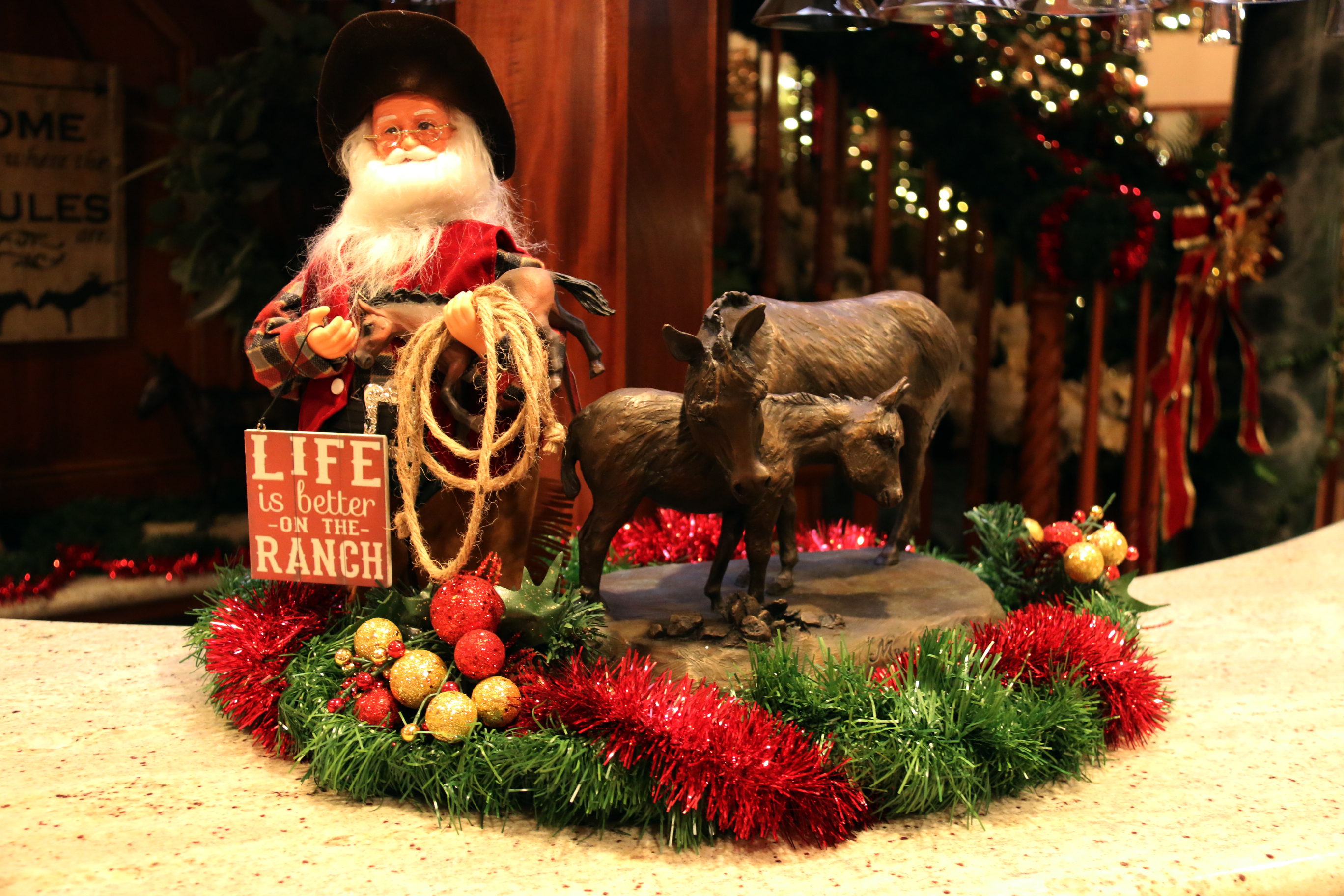
Best wishes and Happy Trails,

Click images to view full size.
| | | |
|  | |
|
|  | |
|  | |  | |
|  | |  |
| |  | | ASK MEREDITH A QUESTION | | | Have a question for Meredith or want to give us feedback? | |
|  | |
| |
| |  | |  | | LTR Training Tip #121 | | Training for Rehabilitation
| | Leading exercises for core strength in good equine posture are essential to the health and welfare of the abused equine.
View many more training tips on our YouTube channel.
| | |
|
|  | |
| |
| |  | |  | | ROCK & ROLL: DIARY OF A RESCUE | | | MOVIE TRAILER | | Rock and Roll: Diary of a Rescue documents the progress of victories and set-backs that the Belgian Draft Mule Team encountered after being rescued. This is a poignant story of how Rock gallantly gave his all and how his teammate, Roll, slowly emerged from his shell and learned to trust us and—even more importantly—himself. Rock and Roll touched everyone’s soul by proving they were ready, willing and able to give everything they could, straight from their enormous hearts...a touching story you won’t want to miss!
WATCH THE FULL MOVIE | |
|
|  | |
| |
|  | 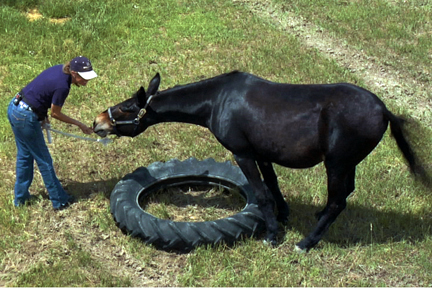 | | TRAINING QUESTION | | Question: I got a mule from an auction kill pen and although he seemed very calm at the auction, he got very nervous when I brought him home. Now, I cannot catch him without getting him cornered and even then, I cannot always catch him. He dodges when I try to put on the halter. What do I do?
Answer: Equines will often seem calm at an auction. You have to realize he might have been drugged. He will need time to adjust to the different surroundings and the new people he will encounter. This takes a LOT of time, so BE PATIENT! Our entire Training Mules and Donkeys series is broken down into small enough steps to identify problems in any equine. It provides exercises that are appropriate for any type of rehabilitation. The key is to always be kind, polite, respectful and considerate throughout all phases of management and training.
Athletic conditioning as we describe, is critical for the abused animal. You cannot do short-term training on an animal that’s experienced that much anguish and is that far gone. You have to get into the abused equine’s mind, and that’s why you have to begin with imprinting.
Dr. Haussler, of Colorado State University, says that trust is the biggest issue with these traumatized animals. Many equines have experienced either physical, emotional, psychological pain or all three. We need to rehabilitate the animal’s trust in man before we can “fix” anything else.
Certainly, these animals will never be what they were when they were young. But, you CAN get marked improvement and more than you might expect.
I think the most remarkable case we ever had was Midnight Victory. This was a mule I sold as a three-year-old. She was gone for 12 years and returned to the ranch sorely abused.
The key to working with an abused animal is to begin slowly. We were patient and allowed Vicki to get comfortable with her new surroundings. We measured the angles of her body to get a baseline, and masseuse, Joanne Lang, began massage therapy. For the first few weeks, even minimal human touch was painful for this poor mule.
When equine masseuse, Joanne Lang, first started working with Vicki, she’d look past her, or through her. She wouldn’t pay attention at all. That’s a dangerous animal to work on, because if an animal isn’t looking at you, he doesn’t know you’re there. And, if he doesn’t care that you’re there, he can hurt you without even meaning to. The nice thing with Vicki, is that as we worked with her, she started to connect with people again.
It’s so important to proceed slowly with an abused animal, and do only as much as he can tolerate at any given time. It’s paramount that you take the time to get the animal’s body back to some semblance of normal health and strength before you even think about getting on and riding. There are a lot of psychological issues to overcome as well. The equine needs consistent reassurance that you are not going to hurt him in any way.
You can’t move too quickly. If you demand too much too soon, you’ll only cause him to regress, and he’ll become even less retrievable.
This is the way it has to be with an abused equine, if he’s ever to be of any use again. Such an animal needs time to heal the body. He needs time to strengthen muscles for performance, and time to gain trust and confidence in people again.
If you want an equine that is mentally, physically and emotionally healthy, and capable of being a safe, obedient and willing companion, you need to be willing to be patient, kind and understanding in your approach. Pay attention to those smaller details that will not only improve your equine’s skills but your own skills as well.
Athletic conditioning is much more than just physical conditioning. Athletic conditioning means paying strict attention to the equine as a whole—mentally, physically and emotionally. Balancing all the components in your equine’s life is the only way to ensure maximum health, longevity, cooperation and performance.
Visit my website at www.luckythreeranch.com.
You are welcome to contact me by email at meredith@luckythreeranch.com.
I will respond promptly!
Click images to view full size.
| | |
|  | | |  | |
FROM OUR
READERS & VISITORS
"I live right across the lake from you and every night I see your beautiful Christmas lights. Thank you for putting them up! They always make me smile! Merry Christmas!”
🌸🌸🌸🌸🌸🌸🌸🌸🌸🌸🌸
“I just wanted to reach out to say that I love following you on Facebook and seeing your gorgeous mules! Your posts were what made me consider a mule in English riding! They make excellent fox hunters!”
🌸🌸🌸🌸🌸🌸🌸🌸🌸🌸🌸
“I received my book last week and still reading and looking.
I was blessed to have met Bonnie several years ago at the Bishop Mule Show and three or four times at Mule Days in Columbia, Tennessee. An awesome lady. She was a friend with another special friend of mine, Sue Cole. Sue was the editor of Mules and More Magazine and now her granddaughter has taken over the reins following Sue's death in 2022 and also does a very wonderful job.
I have several of Bonnie's prints and several of her Leaning Tree cards, miss seeing them.
I love the book and try to find time to continue reading it.
I am a lover of them long-eared critters.”
🌸🌸🌸🌸🌸🌸🌸🌸🌸🌸🌸
“I’ve been a horse person all of my life. It was quite by accident that I ended up with a mule because she was kid-safe. However. Lol. I treated her like a horse. Needless to say that did not go well. Finally, as a last-ditch effort before selling her, I googled “How to train a mule.” That search led me to your website where I printed off every article I could find. Then I read those pages every day BEFORE I went out to work with Ethel. It was literally like learning a brand new language. And the transformation in my relationship with Ethel was amazing. She gifted my son with many years of companionship and joy.”
🌸🌸🌸🌸🌸🌸🌸🌸🌸🌸🌸
“What a fun time and how awesome Meredith Hodges opened up her ranch for us to see. What an incredible woman and what a special place! To a great 2024 for all!”
TRAINING QUESTION
EXTRA
Happy New Year! I'm a French hoof care practitioner and long rider. With my partner, I just achieved a 10000 km long ride around Europe with 4 mules. We always try to improve our equipment and are currently thinking about saddle fit. We obviously know that mules have a different conformation and a locomotion from the horses. I think their center of gravity is a bit further back than the horse's. Am I right? What are your thoughts about that? I can't find any study on the topic. Thank you
very much!...
Thank you for your long answer. My question was on the position of the center of gravity regarding where the rider sits on the front-to-back axis. Maybe I didn't express myself well enough. Some people say that on this axis the center of gravity is just behind the withers (I know the center of gravity is lower on the down-to-top axis). I think it's a bit further back but I can't find any study about that. In fact, the western saddles throw the weight of the rider to the back of the saddle. For optimum result, the weight of the rider should be just over the center of gravity of the mule. So is the center of gravity of the mule located further back on the front-to-back axis if compared to the center of gravity of the horse?
What's your opinion?
Answer: In my 40+ year study of equine motion with horses, mules, donkeys and ponies, the Laws of Physics remain the same. One needs to certainly take into consideration the conformation of the individual animals and that will be quite different from one to another. This is also true of their movement, however, if their core strength and balance is developed properly, it should put them as close to a perfect equine posture as they can get. Each animal is unique.
This means that all the core elements are symmetrically developed around the bones and will support the balance and traveling in a more predictable way. It will become a series of lines and fulcrums that will support the equine in motion in a way to not only build their internal core elements (muscles, tendons, ligaments, soft tissue and even cartilage) so they will not be stressed when in motion. Joints will work properly, cartilage will be worn evenly within the joints and the internal organs will not be compromised.
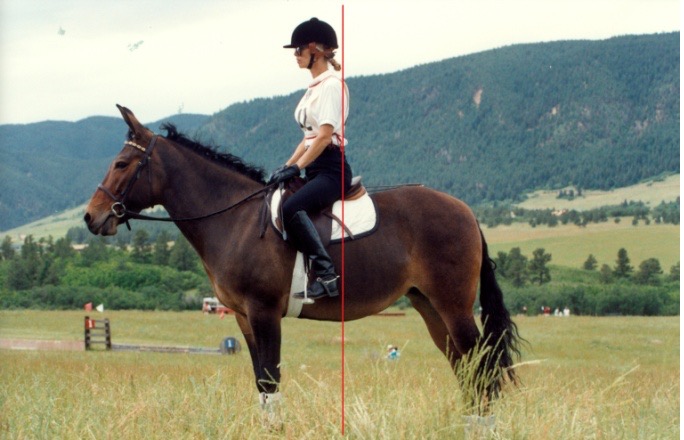 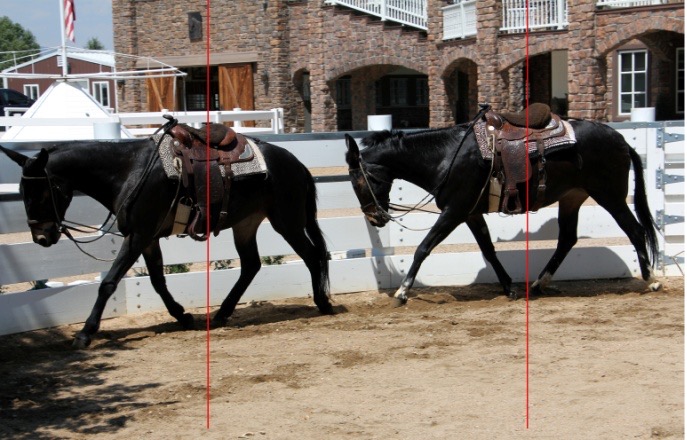
Individual equines DO move differently and this shouldn't be described with a general statement just between horses and mules. The Center of Gravity is unique to each individual equine. An equine in good posture will always be a much smoother ride with his Center of Gravity on a perpendicular line from the center of his torso to the ground. The saddle (English or Western) should be placed such that the seat bones of the rider, and the stirrups when hanging freely, are over this Center of Gravity of the equine which is the middle of his torso. When the saddle is not placed this way, many anomalies can occur for both equine and rider (unbalanced rider position can cause undue soreness in both, girths will not be placed properly to avoid chafing, unbalanced movements can cause Ringbone, Side Bones, calcification, arthritis, etc.). Misplaced saddles are VERY COMMON and will cause the issues that you talk about.
I did a documentary about how to develop postural balance and core strength in equines named ROCK & ROLL: DIARY OF A RESCUE that validates everything I have learned and published. You can find it under VIDEO ON DEMAND, or purchase your own copy of the DVD, at www.luckythreeranchstore.com.
I hope this answers your questions. I might add that I still have 17 animals that have been in this program, most of which are 27-34 years old, and with NO ARTHRITIS at all.
Sincerely,
Meredith Hodges
| |
|
|  |
| |  | | Longears Limelight | |
MULE CROSSING: Neonatal Isoerythrolysis
By Meredith Hodges
“Neonatal Isoerythrolysis (N.I.) is a condition in which the mare creates antibodies against the foal’s red blood cells, and then passes these antibodies to the foal via the colostrum. Once the foal absorbs these antibodies, they result in lysis*
of the foal’s red blood cells within 24 to 36 hours after birth. This red blood cell destruction is widespread throughout the foal’s body and can lead to
life-threatening anemia and/or jaundice. (This is similar to the human Rhesus, or Rh factor, where a woman who is Rh-negative gives birth to her second or subsequent child that is Rh-positive, resulting in destruction of the newborn’s red blood cells.)”
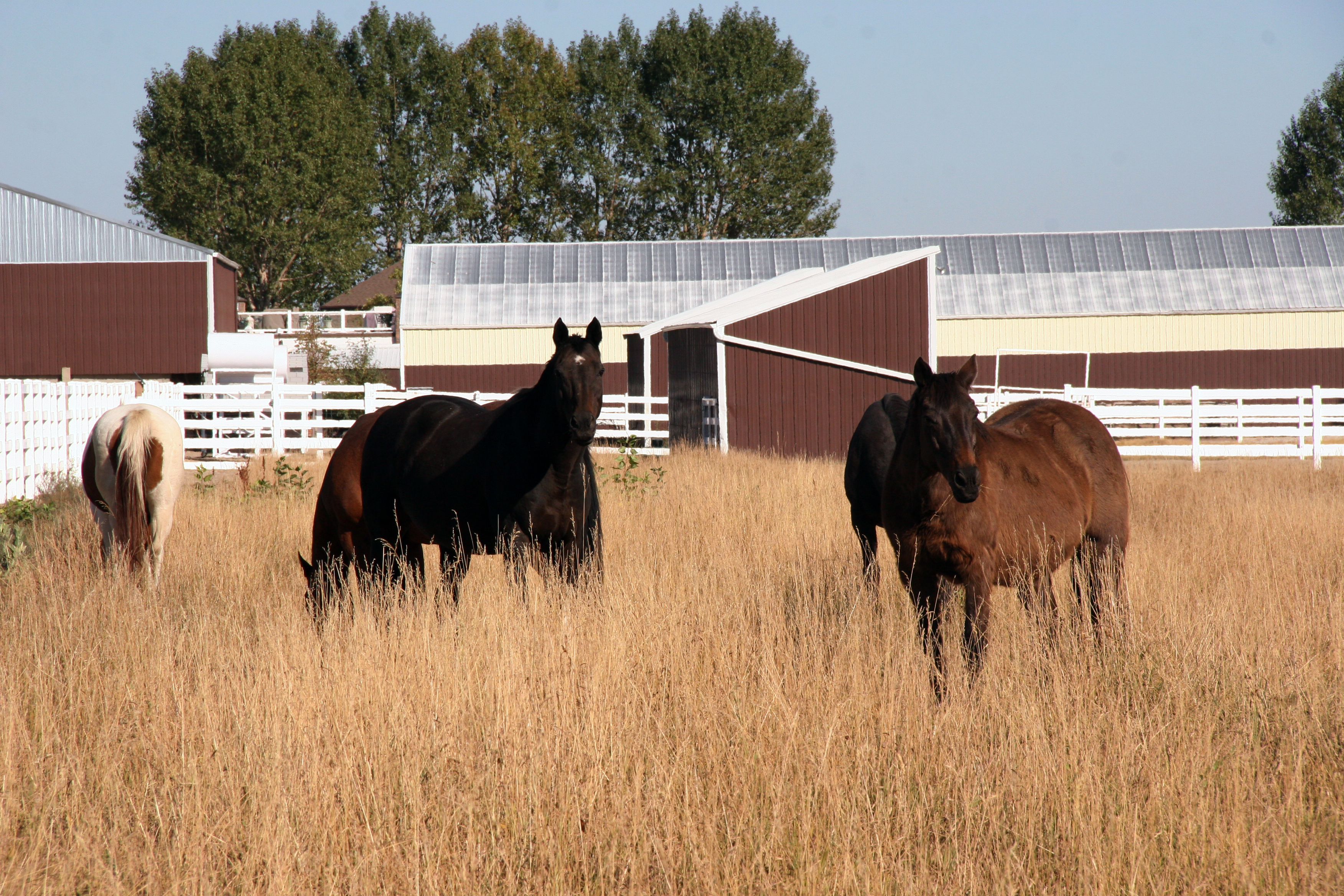
All legitimate mule breeders should be aware of this condition, especially because it can occur more often when breeding donkey jacks to mares than it does when breeding stallions to mares within the same species. If the hybrid foal’s blood type is the same as its mother’s, then there is no problem. However, when the jack and the mare have different blood types, and the foal possesses the jack’s blood type, there is potential for N.I. to occur.
On the surface of the mare’s red cells are antigens that will stimulate the production of antibodies against incompatible red blood cells (R.B.C.s). There are basically two ways that these R.B.C.s can get into her system:
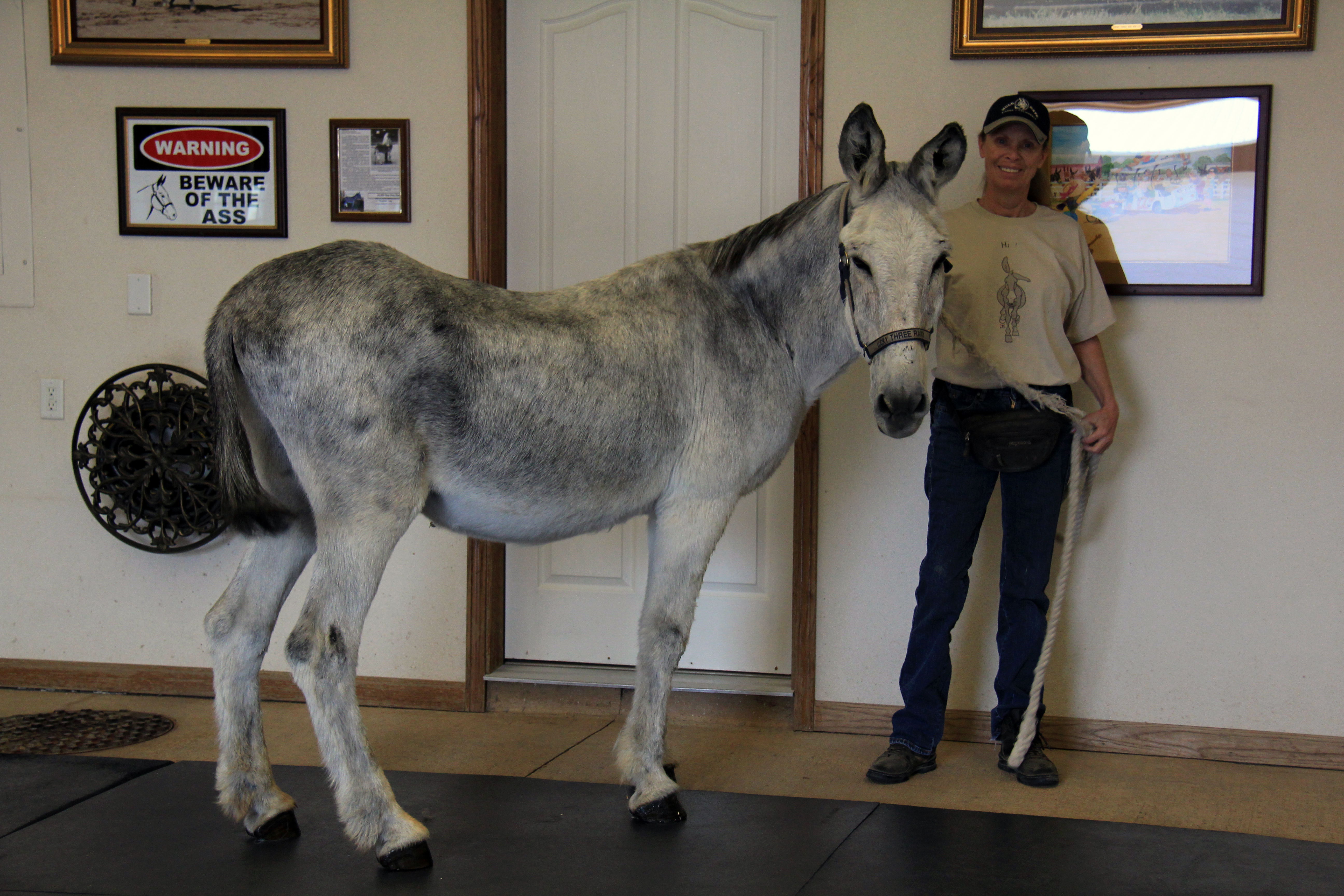
- If the foal’s R.B.C.s enter the mare’s circulation via the placenta during pregnancy or during delivery.
- If the mare obtains these incompatible cells during a blood transfusion.
If neither of these conditions occurs, the mare can carry, birth and nurse her foal with no problem. However, if the incompatible red cells do somehow get into her system, she will begin making antibodies against those cells that, in turn, will be passed into the foal’s system via the mare’s first milk, or colostrum.
“Signs of neonatal isoerythrolysis depend upon the rate and severity of red blood cell destruction. Affected foals are born healthy, and then typically develop signs within 24 to 36 hours. In severe cases, the signs of N.I. may be evident within 12 to 14 hours, whereas in mild cases, signs may not be present until three or four days of age. N.I. foals will develop progressive anemia, thus leading to depression, anorexia, collapse and death. These foals may also develop pale mucous membranes that later become yellow or jaundiced.”
The mare’s blood can be tested ahead of time to determine if she has a different blood type than the jack (or stallion), but a positive test result does not necessarily mean that N.I. will automatically occur, only that there is the possibility for occurrence. Blood samples from the mare and jack should be taken two to four weeks before the mare is due to foal to determine if she is producing antibodies against the foal’s red blood cells. If the blood test is positive, then precautions must be taken to save the foal at birth by making sure it is prevented from nursing its dam for the first 24 to 36 hours. The foal should be muzzled and bottle-fed colostrum from a mare that has not produced these same antibodies, and therefore is compatible with the foal. To be absolutely safe, the colostrum should be obtained and tested from a mare that has never had a mule foal.
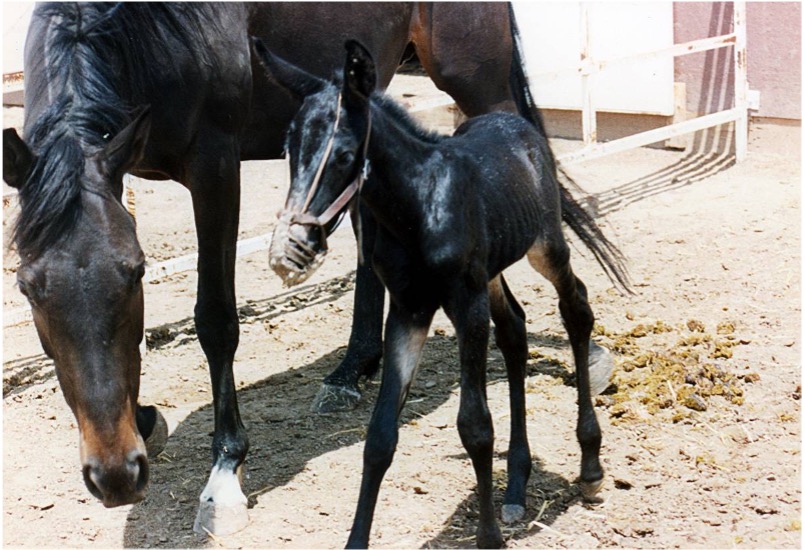
For the best results in building the foal’s immune system, this “replacement” colostrum should be collected within the first six hours after birth. The mare being used does not need to be the same blood type as the foal, but her blood must not contain antibodies to the foal’s R.B.C.s. The quality of the colostrum will determine the amount fed to the foal. Immediately after birth, the foal should be given two to three feedings of colostrum within the first two hours, and then be given milk (for energy) for the first 24 to 36 hours after that. Goat’s milk is best for this purpose. After 24 to 36 hours, the foal should be able to be safely returned to its dam’s milk. If N.I. is present but is caught early enough, the foal can be transfused with blood and there is a chance that it may live, but this transfusion procedure has inherent risks and there are no guarantees of success.
Out of concern for future mule offspring, the Lucky Three Ranch—with the assistance of our veterinarian, Kent M. Knebel, D.V.M.; Colorado State University researcher, Josie Traub-Dargatz, D.V.M., M.S.; and Louisiana State University researcher, Jill McClure, D.V.M., M.S.—began thorough testing of Lucky Three Ranch stock in the early nineties, with particular attention paid to our breeding jack, Little Jack Horner. It was discovered by Dr. McClure that Little Jack Horner’s R.B.C.s were resulting in unidentifiable antibodies in many of the horse mares that carried his foals. The mares that were sampled had antibodies present, but Dr. McClure was unable to “type” the antibodies found in the mares.
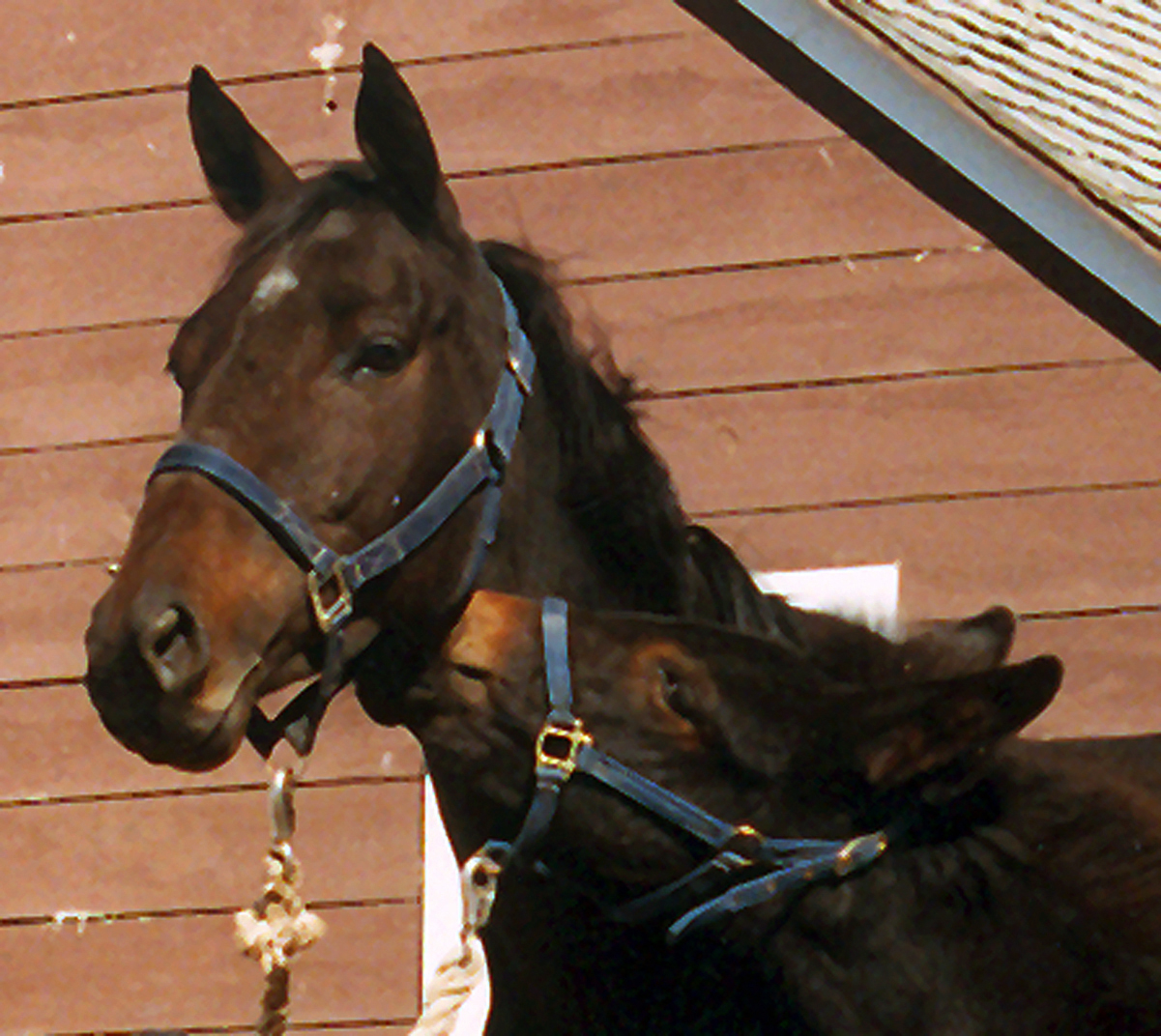
The next step was to immunize some research horses at L.S.U. using Little Jack Horner’s R.B.C.s. If they made antibodies, Dr. McClure would have a more readily available source of antibodies for further research. She also took samples from some burros from another L.S.U. project and discovered that they, too, had the same R.B.C. factor that occurred in Little Jack Horner, but the antibodies produced in the mares were still unidentified. There was already quite a bit of medical and scientific data on N.I. that could help in the prevention of this potentially fatal condition. However, this discovery of new antibodies stimulated by the jack and produced by the mare proved that there was still a lot more that needed to be learned. All of Little Jack Horner’s tests showed him to be of a compatible blood type to the mares if he was a stallion of the same species, and yet these unknown antibodies were being produced. Perhaps future research will hold the answer to this puzzle.
A debt of gratitude is owed to veterinarians like Dr. Kent Knebel, who take time out of their busy schedules to collect samples for this research, and to dedicated researchers like Dr. Josie Traub-Dargatz and Dr. Jill McClure, who continue with this important research that benefits our mule industry and its future generations. Their ongoing research will continue to have a significant impact on mule breeding programs, not just here in the United States, but all over the world.
Research on N.I. has been done over the years on Thoroughbred horses, and statistics indicate that 20 percent have incompatibilities between dam and sire, yet only one percent of foals develop N.I. The incidence in mule breeding suggests that the rate is higher. The University of California at Davis has a laboratory set up to do this initial N.I. testing on mares. Consult with your veterinarian about contacting any facilities for information on how to collect and ship samples for N.I. testing, and for resources that can help in the process.
To learn more about Meredith Hodges and her comprehensive all-breed equine
training program, visit LuckyThreeRanch.com or call 1-800-816-7566.
Check out her children’s website at JasperTheMule.com.
Also, find Meredith on Facebook, YouTube and Twitter.
© 1990, 2016, 2018, 2023, 2024 Lucky Three Ranch, Inc. All Rights Reserved.
Click images to view full size.
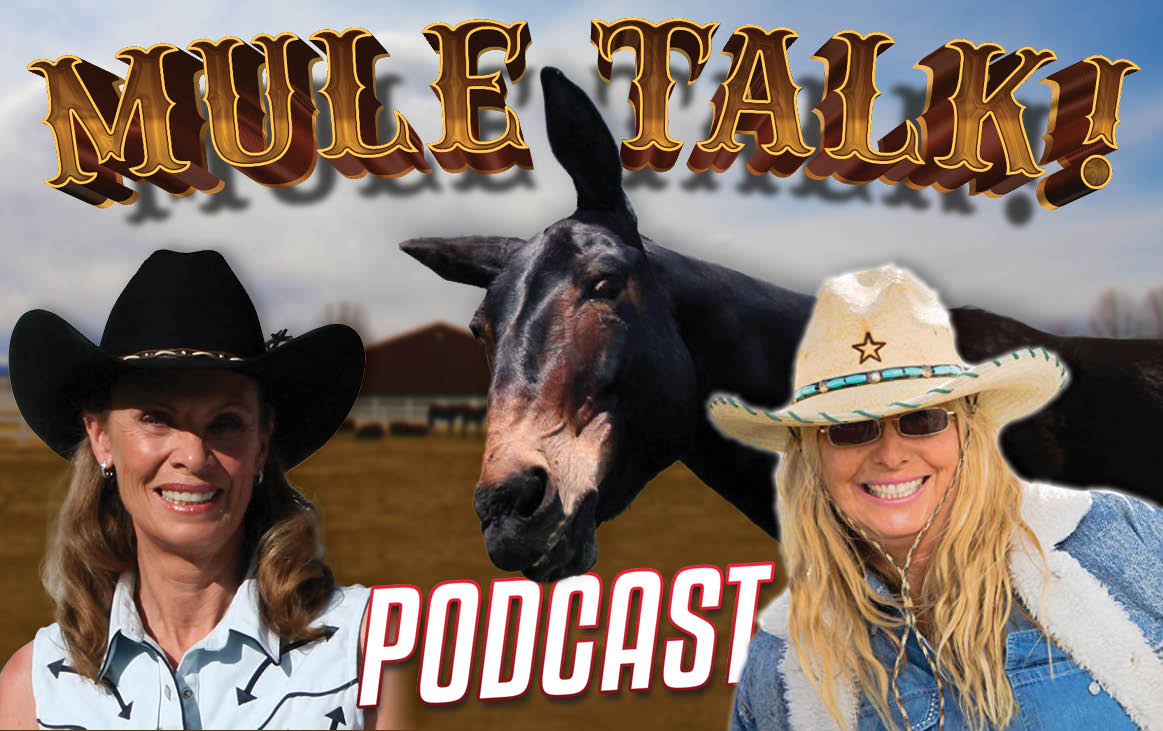 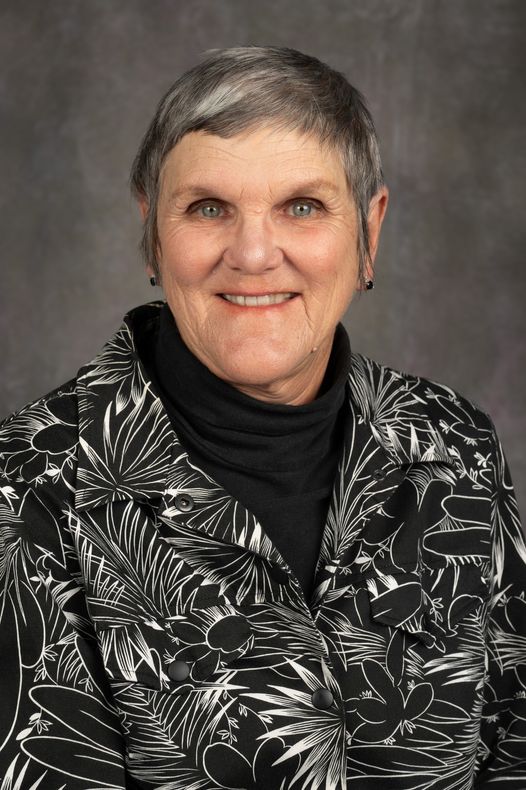
Click here to listen to
Dr. Josie Traub-Dargatz, Professor Emeritus of Internal Medicine (retired) about NEONATAL ISOERYTHROLISIS.
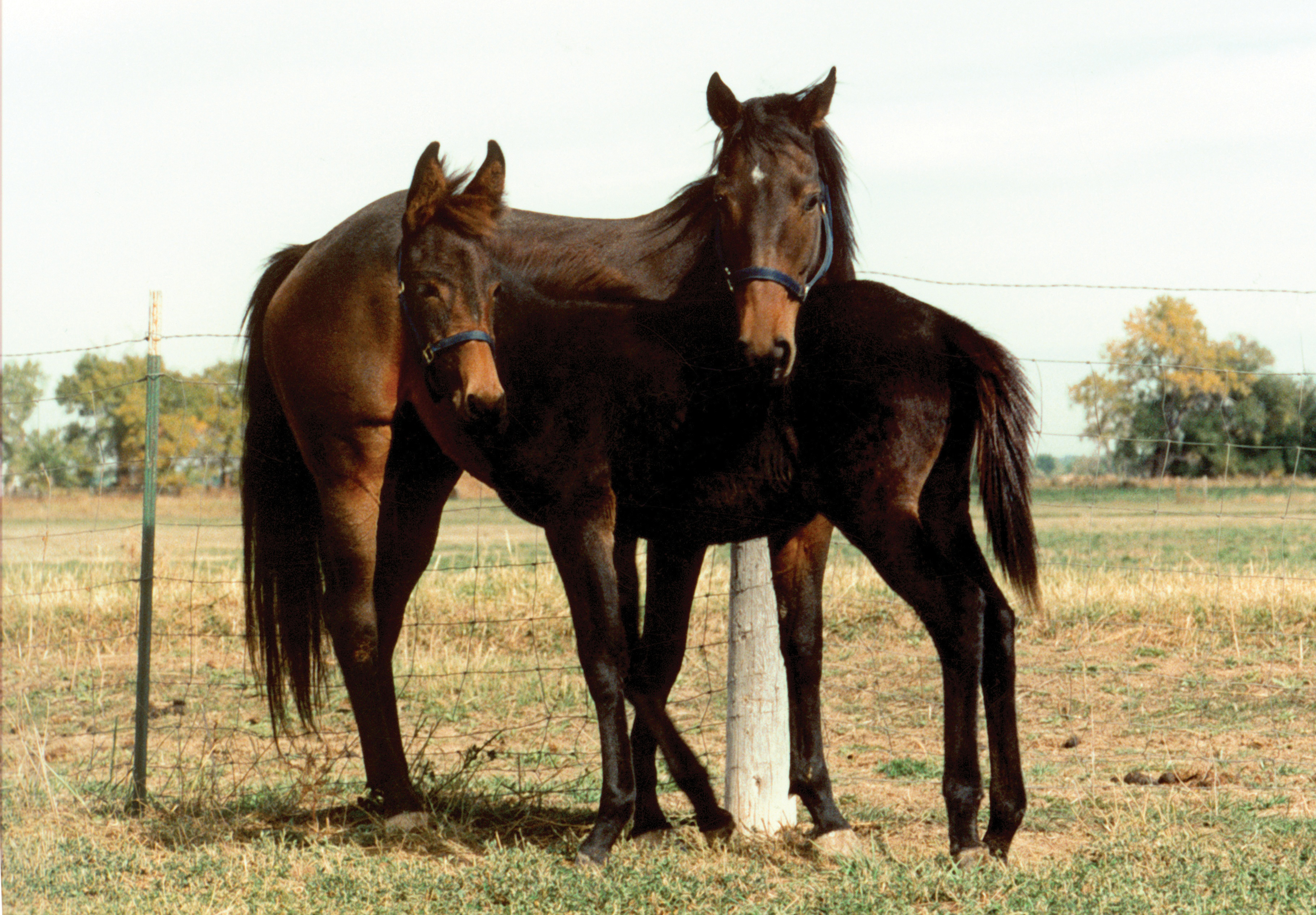
Click here to listen to
Meredith Hodges about Establishing Management Practices for N.I.
Click here to read LTR BLOG about Establishing Management Practices for N.I.
|
|  | |
| |
| |  | | | | FEATURED PRODUCTS
THOSE MAGNIFICENT MULES
DOCUMENTARY SERIES
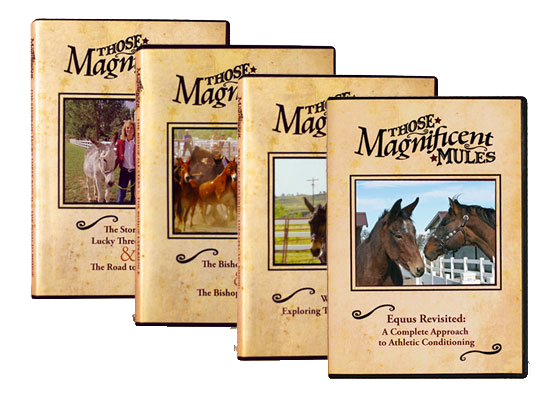
THE LUCKY THREE RANCH & THE ROAD to BISHOP relates the story of
Meredith’s first experiences with Bishop Mule Days beginning in 1979.
THE BISHOP ALL-STARS & the BISHOP EXPERIENCE.
Meredith Hodges, well-known trainer and author of an extensive library on mules and donkeys has produced this exciting documentary. This two-Part DVD series explores the one-of-a-kind wild and wooly Bishop Mule Days Celebration with the riders and mules who have made this event so famous.
In Parts 1 & 2, Meredith Talks with Bishop Mule Days All-Stars Von Twitchell, Lou Moore Jacobsen and Crystal Ward about competing in gymkhana events, English Jumping and Side Saddle Classes. Founder Bob Tanner recounts the history of how Bishop Mule Days began. Tim Phillips, Vern Brooks and Jo De Collins speak with Meredith about what it takes to be a Bishop Mule Days All-Star with career highlights.
In Parts 3 & 4, Join us for the insider’s look at what it takes to put together the Mule Days Celebration, complete with edge-of-your-seat competition footage featuring Gymkhana events, Chariots, Dressage and Musical Tires. We take you behind the scenes and into the arena for the go-for-broke competitions including Cattle Classes, Bridled Reining, Youth Classes and the Pack Scramble.

JASPER GOES TO BISHOP
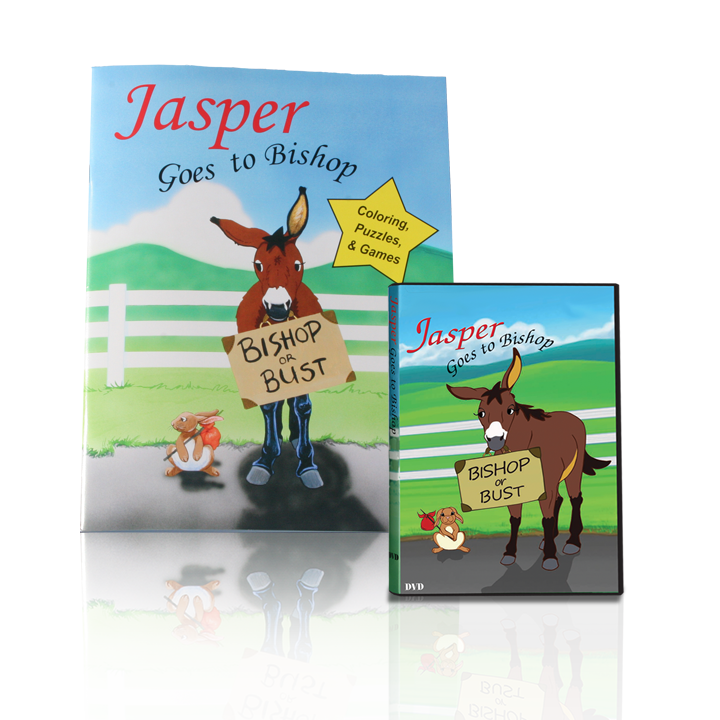
AND DON’T FORGET to visit
www.JasperTheMule.com!
Jasper has a website all his own, full of entertainment, educational Longears information and lots of fun!
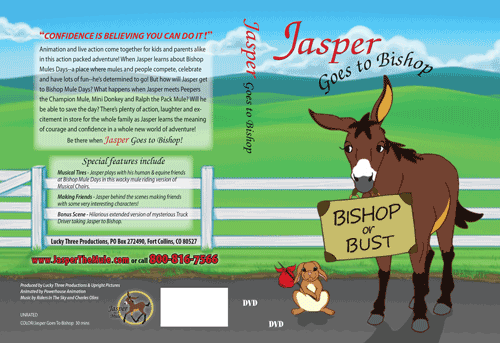
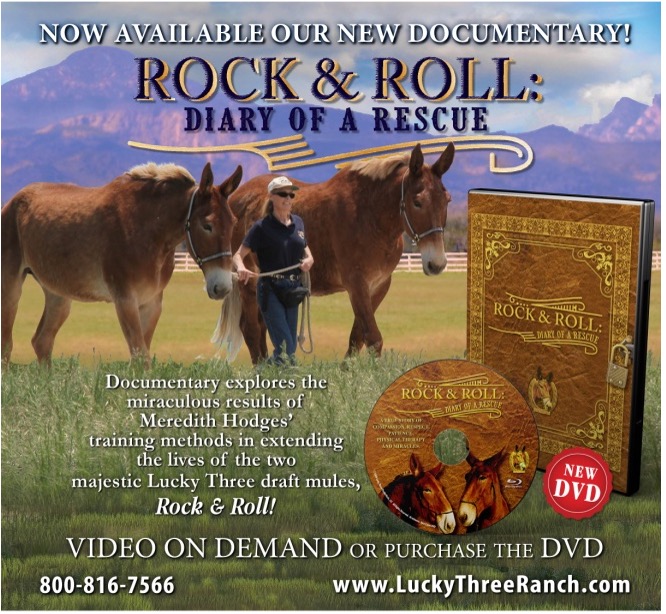
ROCK AND ROLL: DIARY OF A RESCUE
exhibits the ultimate challenge and application of Meredith’s Management and Training techniques. Rock and Roll were a worst-case scenario rescue and truly put this amazing program to the test with remarkable results!
Whether training for normal use, show, or rehabilitating compromised equines, Meredith’s approach will give your equine the athletic edge and take him to his ultimate level of performance! He will be grateful that you care so deeply and the bond of trust between you will deepen like never before!

March
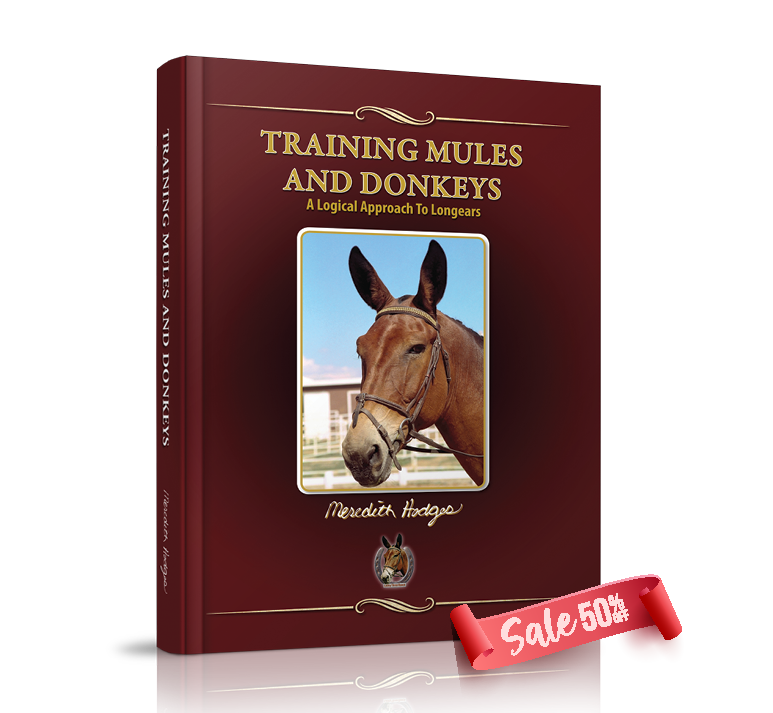
50% off
TRAINING MULES AND DONKEYS (BOOK)
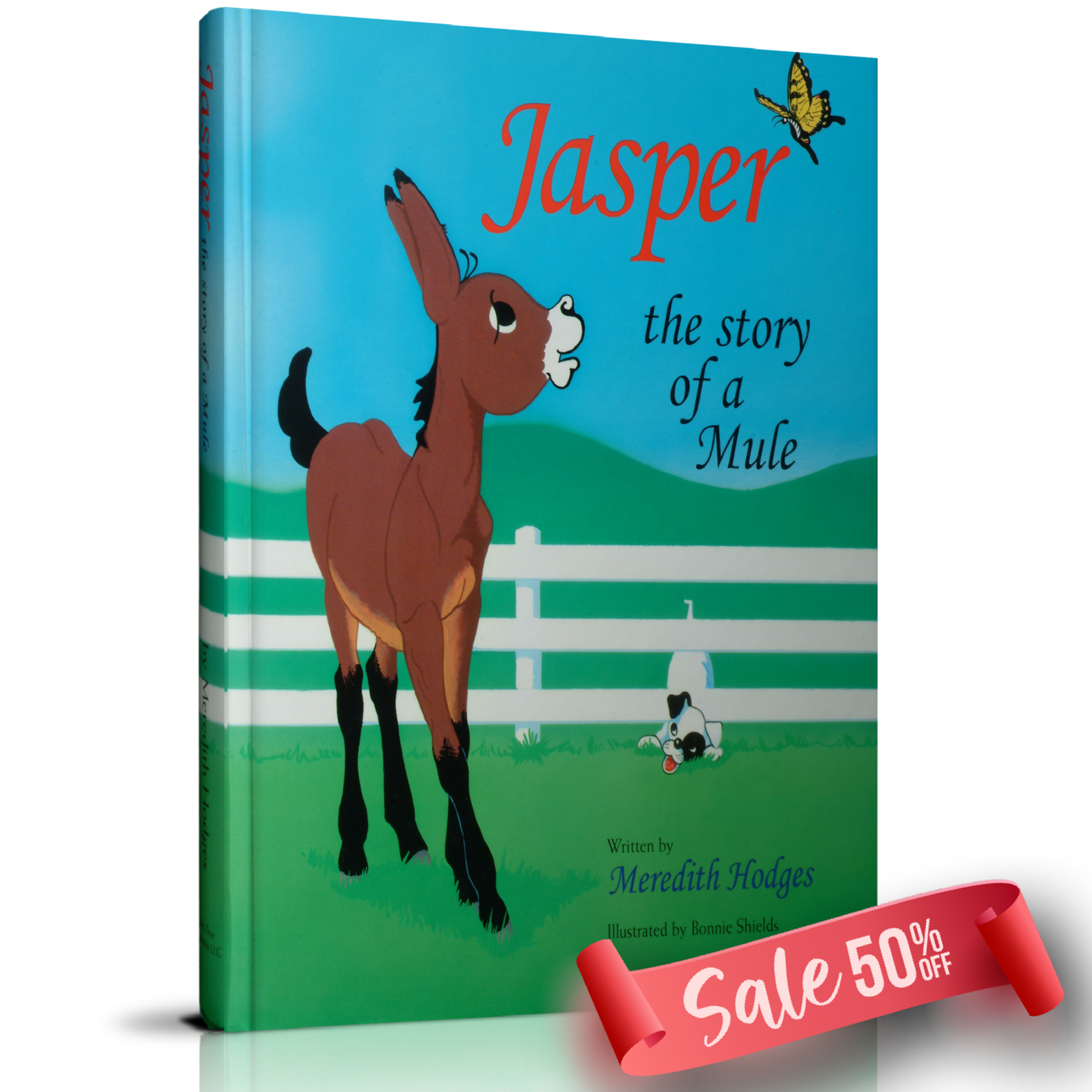
50% off
JASPER: THE STORY OF A MULE (BOOK)
🌸🌸🌸🌸🌸🌸🌸🌸🌸🌸🌸🌸🌸🌸🌸🌸🌸🌸🌸🌸🌸🌸🌸
APRIL
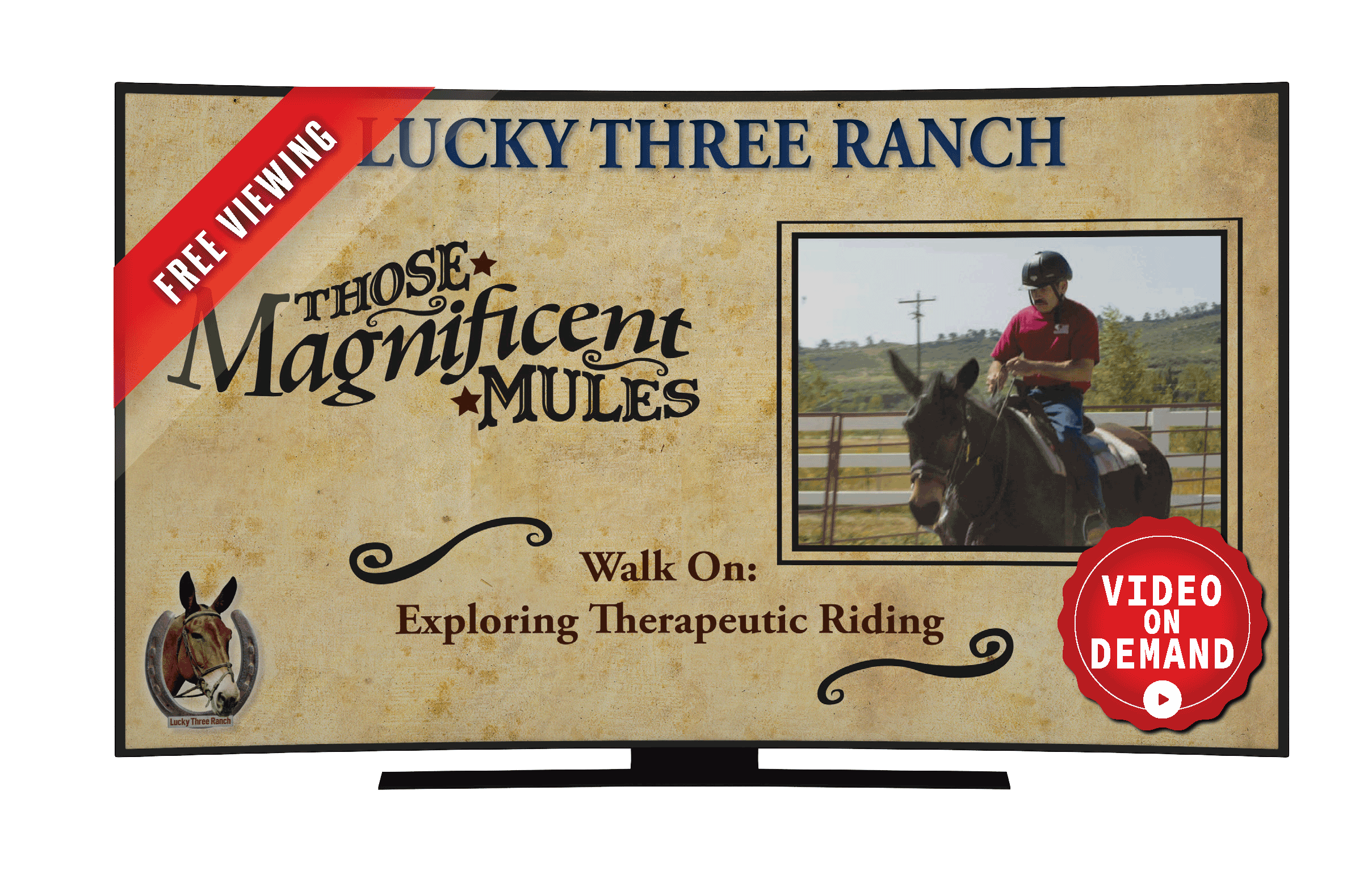 🌸🌸🌸🌸🌸🌸🌸🌸🌸🌸🌸🌸🌸🌸🌸🌸🌸🌸🌸🌸🌸🌸🌸
🌸🌸🌸🌸🌸🌸🌸🌸🌸🌸🌸🌸🌸🌸🌸🌸🌸🌸🌸🌸🌸🌸🌸
MAY

FREE VOD viewing of THOSE MAGINFICENT MULES
THE BISHOP ALL STARS & THE BISHOP EXPERIENCE
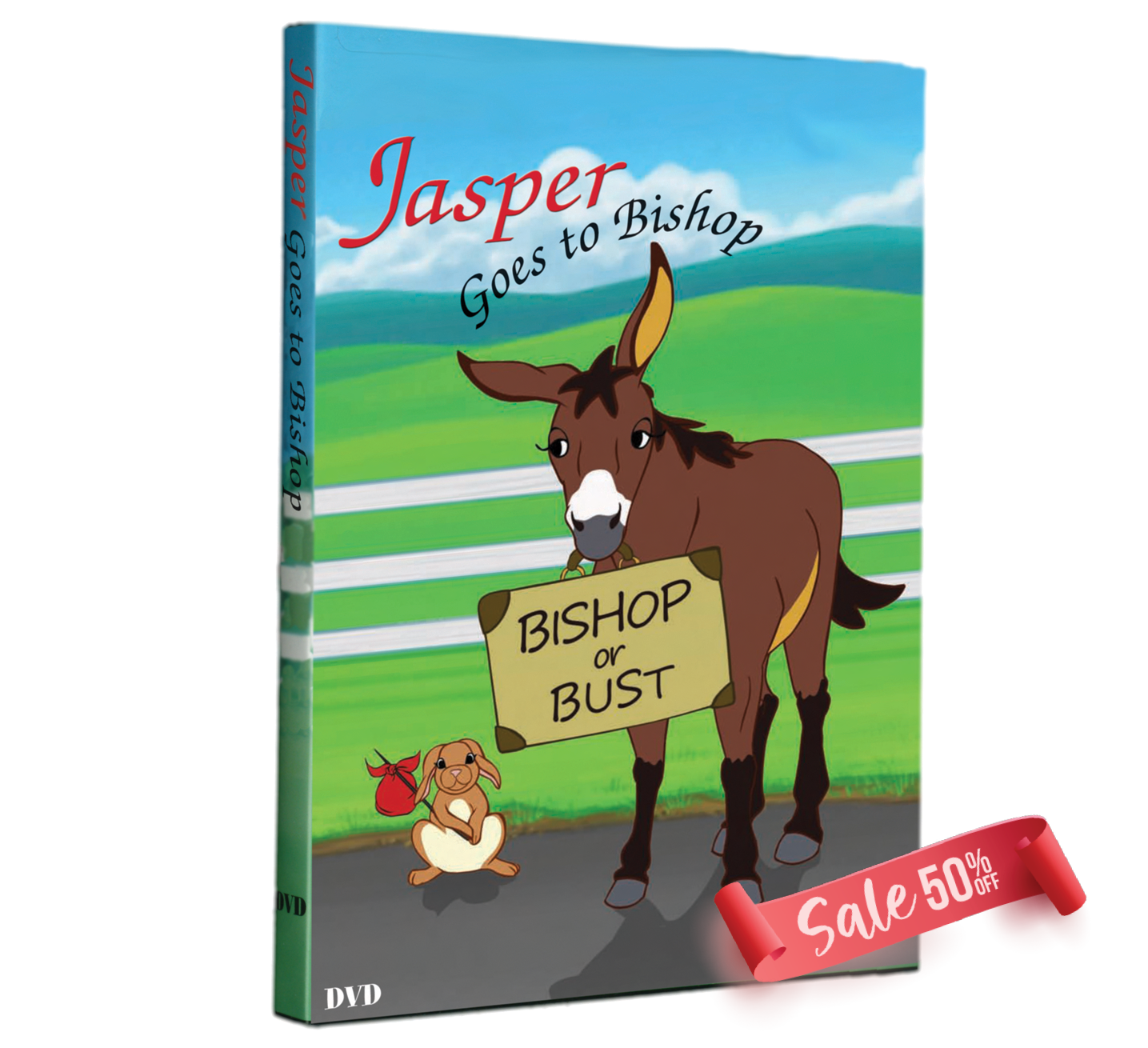
50% off
JASPER: GOES TO BISHOP DVD
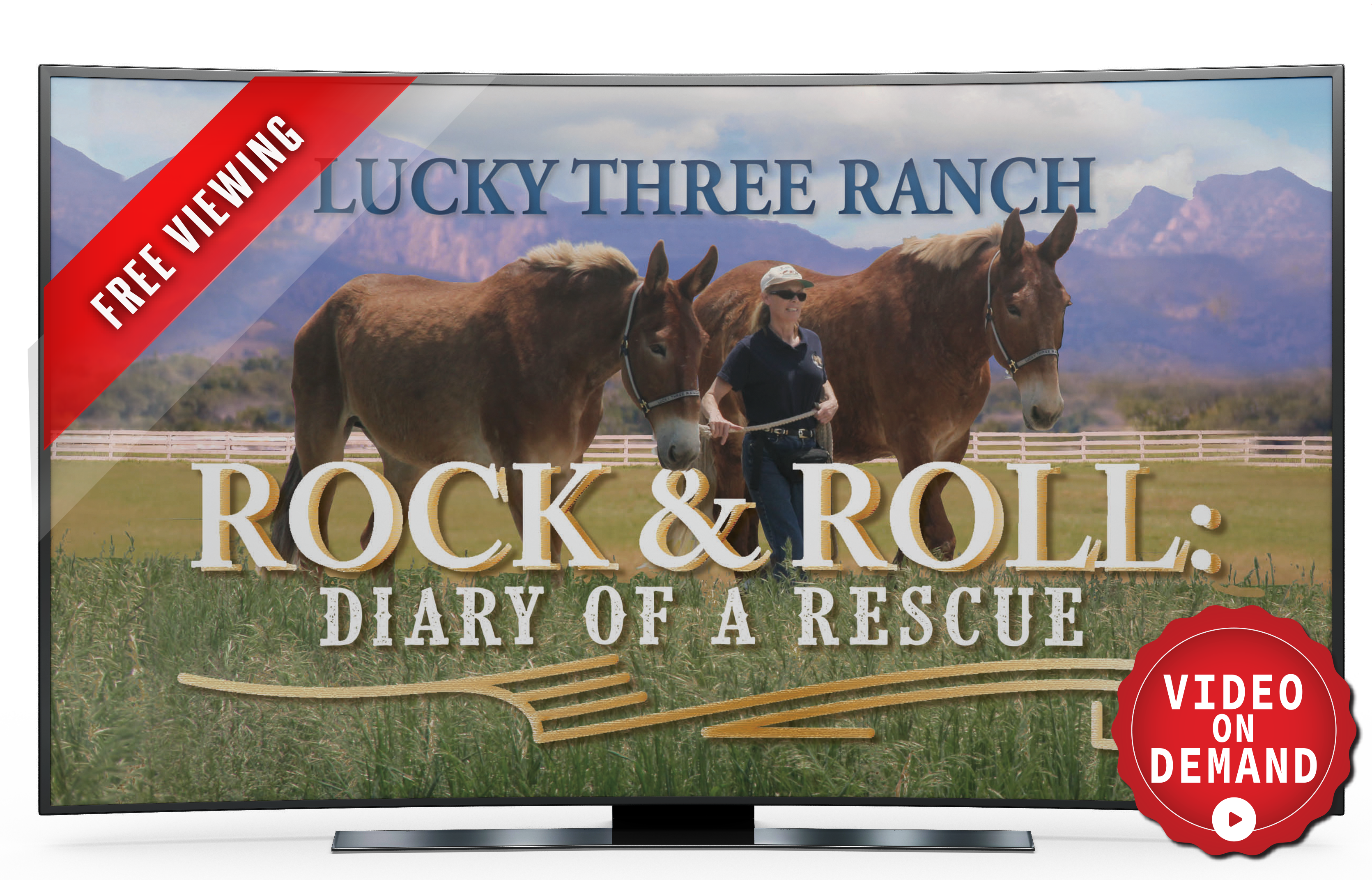
Free VOD viewing of ROCK & ROLL: DIARY OF A RESCUE
|
|  | |
| |
| |  |  | | 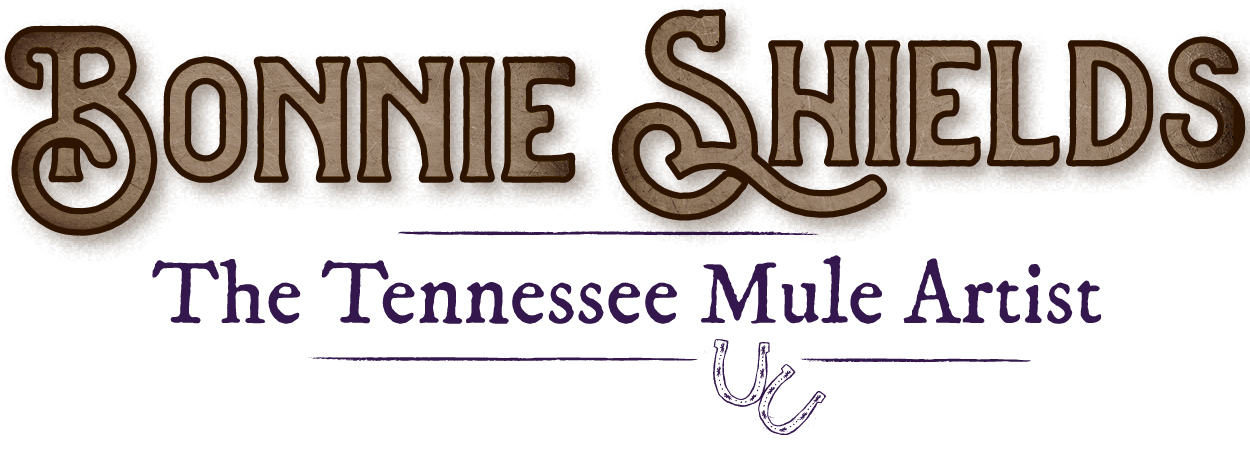 | | Bonnie’s Bit
| | It isn't really like winter out there and it definitely isn't spring--but everything is wet and drippy and no sunshine to be had. You'd think the weather is all we have to talk about anymore. You'd be RIGHT, too!
Iris is in need of toe-trimming and I dare NOT call the farrier as I KNOW that will bring on a massive snowstorm the minute he pulls up to work on her. It's scary to have that much power over the weather!! But, there is NO hair coming off of her so I KNOW it isn't smart to push my luck.
Am working on a little children's book about a big mammoth jack who is, shall we say, less than perfect--or pretty, but is a true jule. Just starting on it so not much to share right now, but it is a sweet story. Makes ya feel GOOD! What a blessing these animals are.
Anyway. Let's all just hang in there some more and sing sunshine songs and love on our critters. We ALL need some escape from these times we are dealing with.
~Hugs and Grins
Bonnie
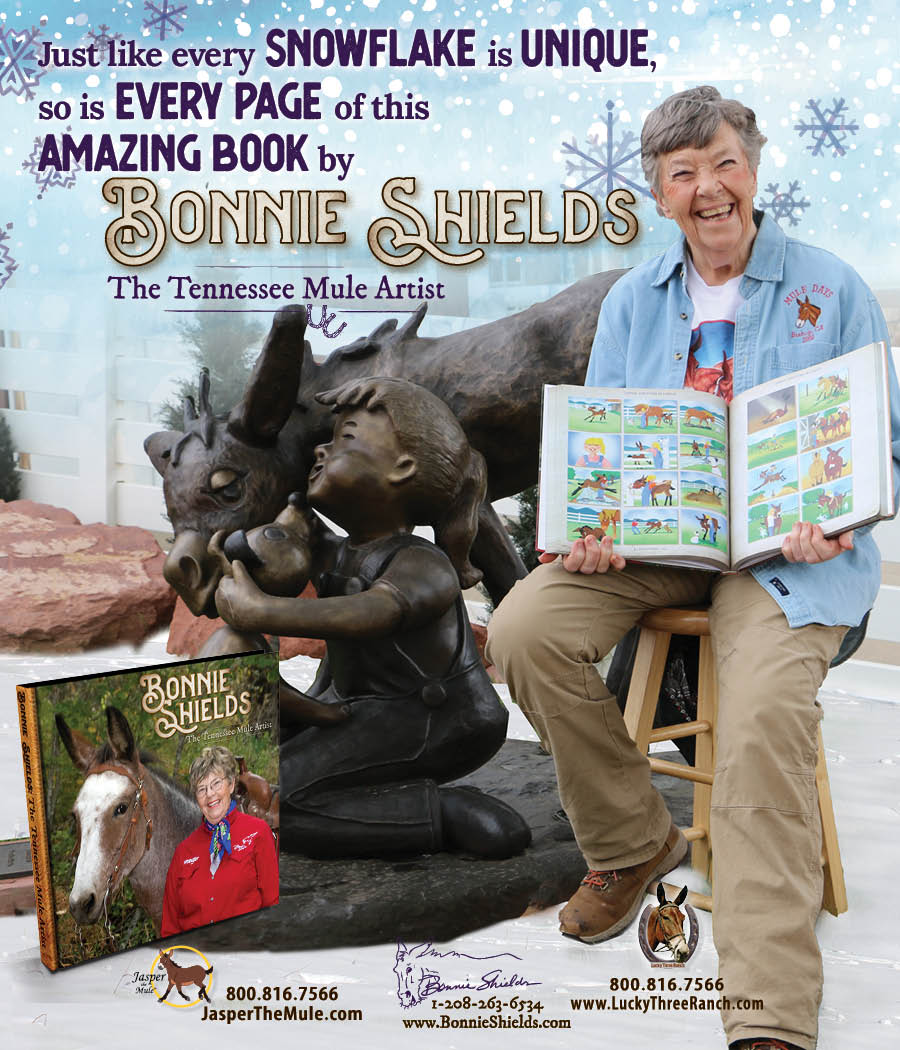
“What a fantastic tribute to a wonderful and talented lady. This book deserves a place with all donkey and mule lovers. What an extraordinary and gorgeous book that you produced. I send my compliments to all that played a part in the publication of this extraordinary book. As Bonnie says, "Keep your traces tight!"
A longstanding member of the Cowboy Cartoonists Association, her wide variety of “mule art” can be viewed at numerous venues, mule and draft horse shows, Western arts and crafts shows, Western trade shows and on the internet at her website at www.Bonnieshields.com. Her talents include drawing, painting and sculpture. She has done a wide variety from ink drawings to acrylic painting to bronze sculpture, from commissioned work to originals, all revering the mule. She has also written a multitude of articles for such publications as The Brayer, a bimonthly publication put out by the American Donkey & Mule Society, Mules and More magazine, and the “Bishop Mule Days” program, and her yearly publication of the BS ‘ogram is always a welcome read!
In 2006, Bonnie was inducted into the Bishop Mule Days Artist’s Hall of Fame. Despite public demand, Bonnie always makes time to spend with her mules during the year exploring the beautiful scenery and experiencing the wonder that the mountains have to offer. Her mountain adventures were never dull and invariably contribute to her diversity of work and her infectious sense of humor!
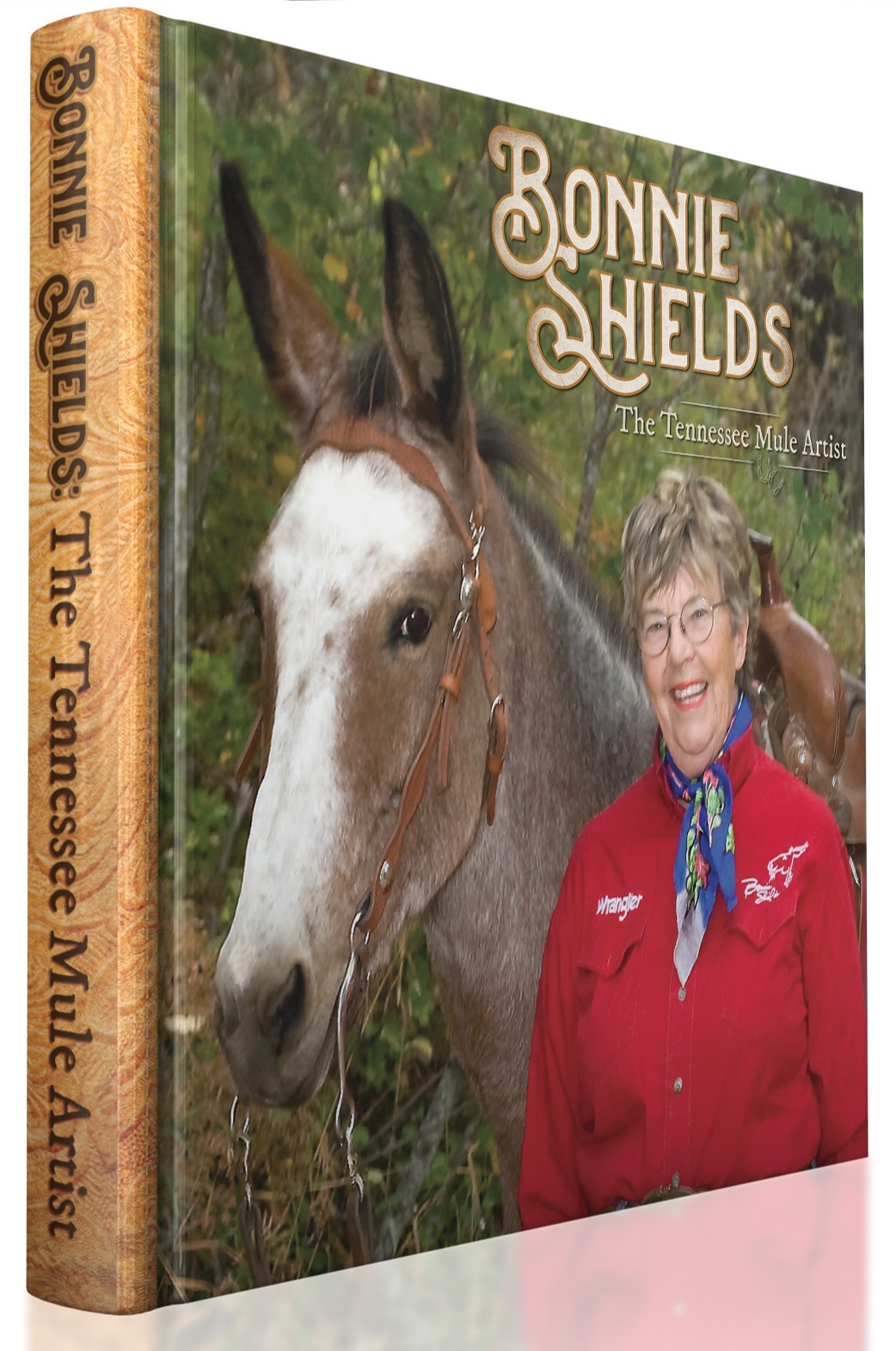
Purchase this book at
www.luckythreeranchstore.com
or at
www.bonnieshields.com
and enhance YOUR equine library!
And visit her website to find out more
about the Wild and Wonderful World of Bonnie Shields, Tennessee Mule Artist, Cowboy Cartoonist and True Artist!

|
|  | |
| |
| |  |  | | | | | | 
WATCH OUR NEW VIRTUAL TOUR
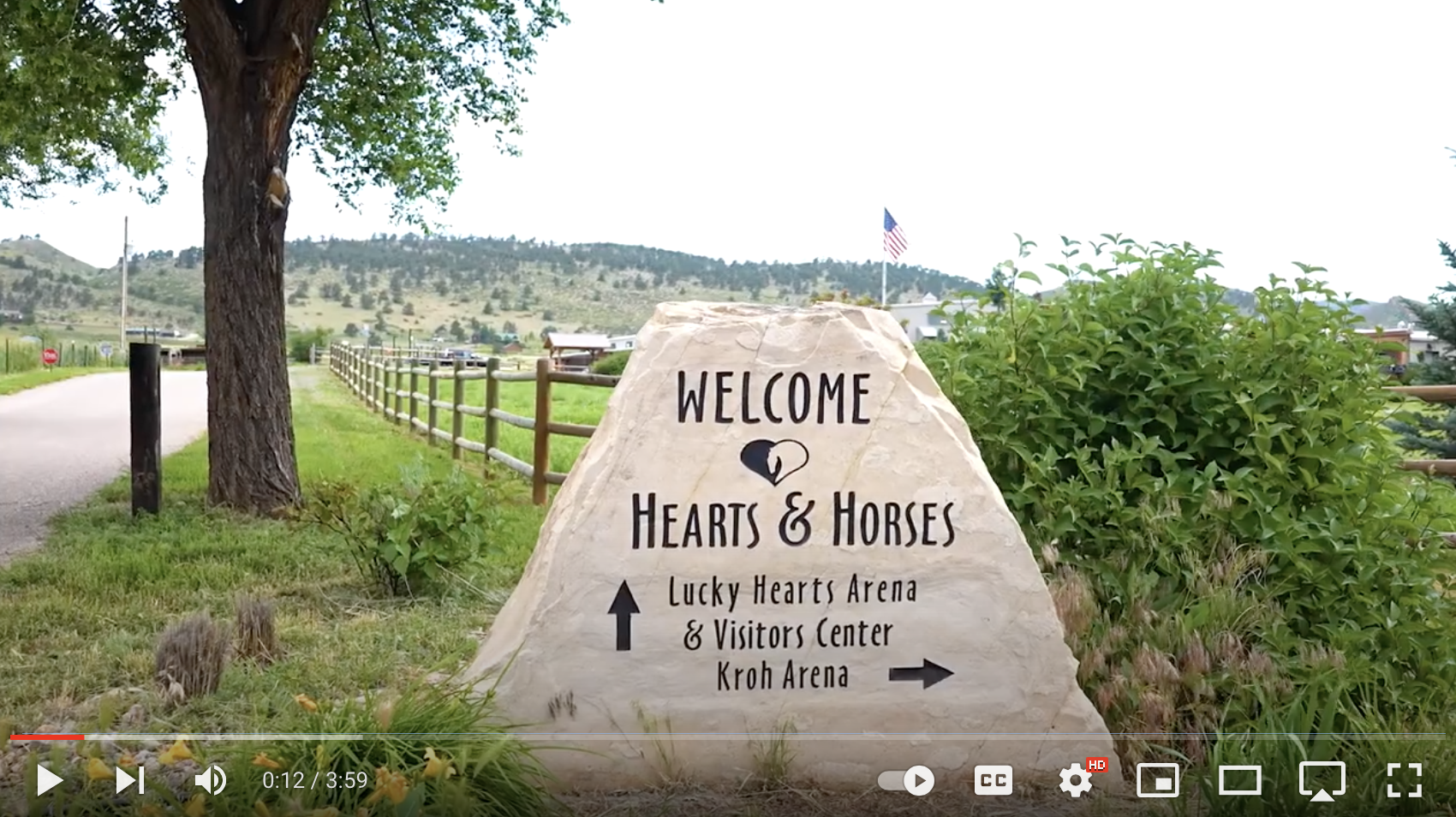
Hearts & Horses has just released their brand new virtual tour!
If you haven't been out to see their center before,
then this is the second-best thing!
Watch now to explore all of the state-of-the-art facilities designed to heal minds, bodies, and spirits at their 23-acre ranch in Loveland.

Article Submitted by Leila Einhorn, Communications Manager
Hearts & Horses - 163 N. CR 29 - Loveland, CO 80537
Phone: (970) 663-4200 x 307 www.HeartsAndHorses.org COVID-19 Updates
Hearts & Horses is a 501(c)(3) non-profit organization and we are proud to be a PATH Intl. Premier Accredited Center
Follow us on Facebook
Give the Gift of Joy and Healing
Through an incredible depth and breadth of programming, Hearts & Horses impacts every life we touch. Support the wonderful effects of therapeutic riding for individuals by supporting Hearts & Horses today!
|
|  | |
| |
|
| |
|